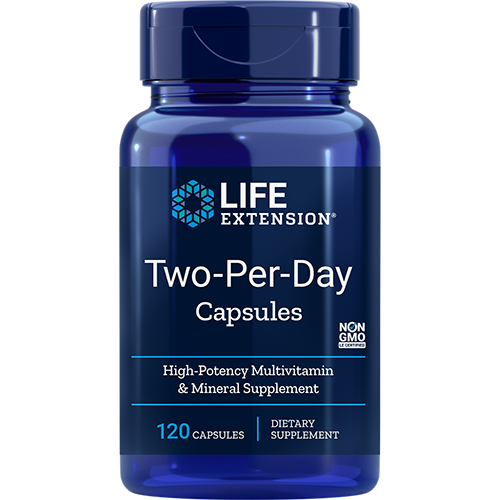Is Life Extension Two-Per-Day Capsules Alpha-Gal?


Ingredients
Vitamin A (as beta-carotene, acetate), Vitamin C (as ascorbic acid, calcium, and niacinamide ascorbates), Vitamin D3 (as cholecalciferol) (2,000 IU), Vitamin E (as D-alpha tocopheryl succinate, D-alpha tocopherol), Thiamine (vitamin B1) (as thiamine HCI), Riboflavin (vitamin B2) (as riboflavin, riboflavin 5’-phosphate), Niacin (as niacinamide, niacinamide ascorbate), Vitamin B6 (as pyridoxine HCI, pyridoxal 5’-phosphate), Folate (as L-5-methyltetrahydrofolate calcium salt), Vitamin B12 (as methylcobalamin), Biotin, Pantothenic acid (as D-calcium pantothenate), Iodine (as potassium iodide), Magnesium (as magnesium oxide), Zinc (as zinc citrate, L-OptiZinc® zinc mono-L-methionine sulfate), Selenium [as sodium selenite, SelenoExcell® high selenium yeast, Se-methyl L-selenocysteine], Manganese (as manganese citrate, gluconate), Chromium [as Crominex® 3+ chromium stabilized with Capros® amla extract (fruit), PrimaVie® Shilajit], Molybdenum (as molybdenum amino acid chelate), Inositol, Alpha lipoic acid, Natural mixed tocopherols (providing gamma, delta, alpha, beta), Bio-Quercetin phytosome (providing 5 mg quercetin [from Japanese sophora concentrate (flower bud)], phosphatidylcholine complex [from sunflower]), Marigold extract (Tagetes erecta) (flower) [std. to 5 mg trans-lutein, 155 mcg trans-zeaxanthin], Apigenin, Boron (as boron amino acid chelate), Lycopene [from LycoBeads ® natural tomato, vegetable cellulose (capsule), starch, maltodextrin, vegetable stearate, dicalcium phosphate, silica, microcrystalline cellulose.
What is a Alpha-Gal diet?
An Alpha-Gal diet eliminates mammalian meat and products containing mammalian-derived ingredients to prevent allergic reactions in people with alpha-gal syndrome. This includes beef, pork, lamb, dairy products, gelatin, and certain medications derived from mammals. The condition involves a specific sugar molecule found in most mammals, often triggered after a tick bite. People may experience delayed allergic reactions 3-6 hours after consuming trigger foods. The diet focuses on safe alternatives like poultry, fish, and plant-based proteins. When followed carefully, often with guidance from an allergist or dietitian, it can prevent serious reactions while maintaining adequate nutrition.


